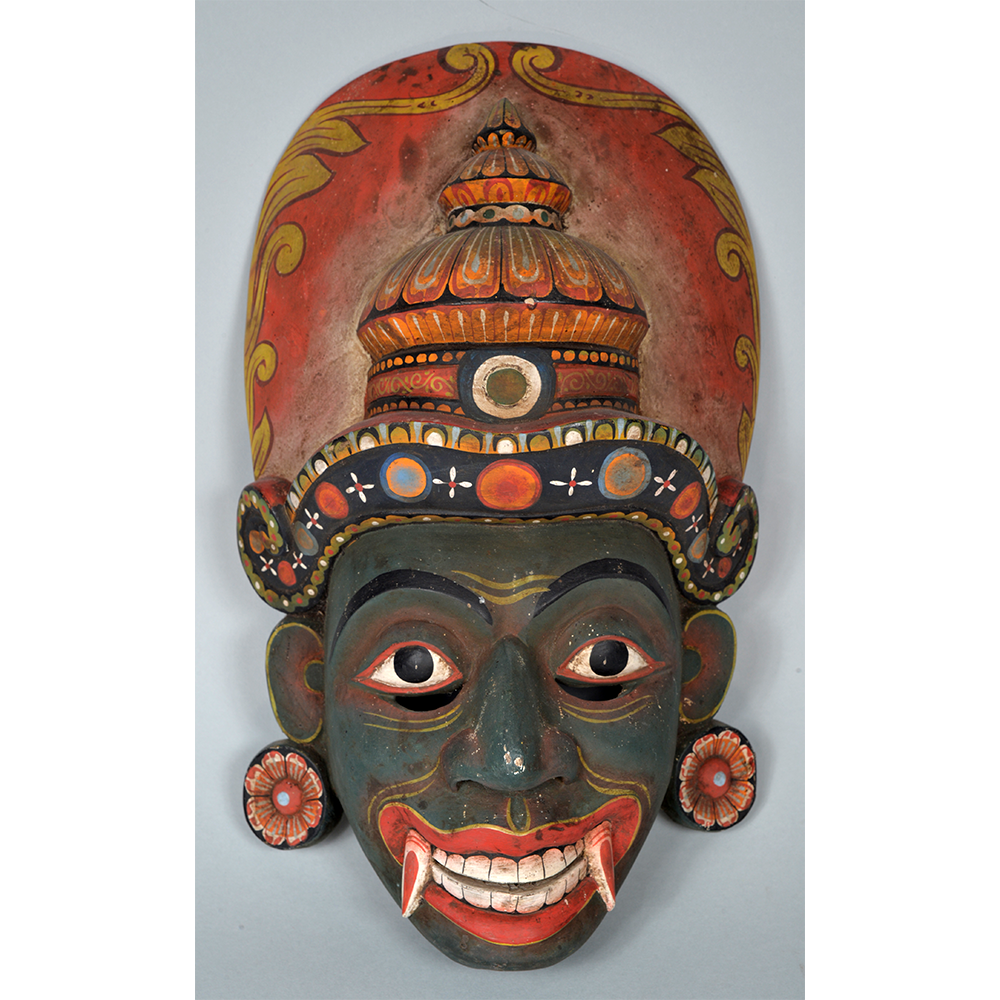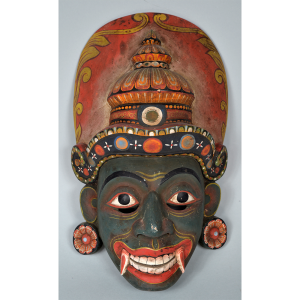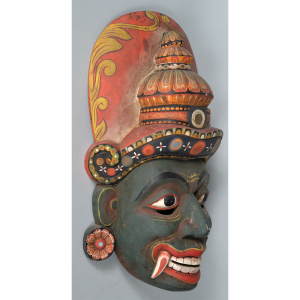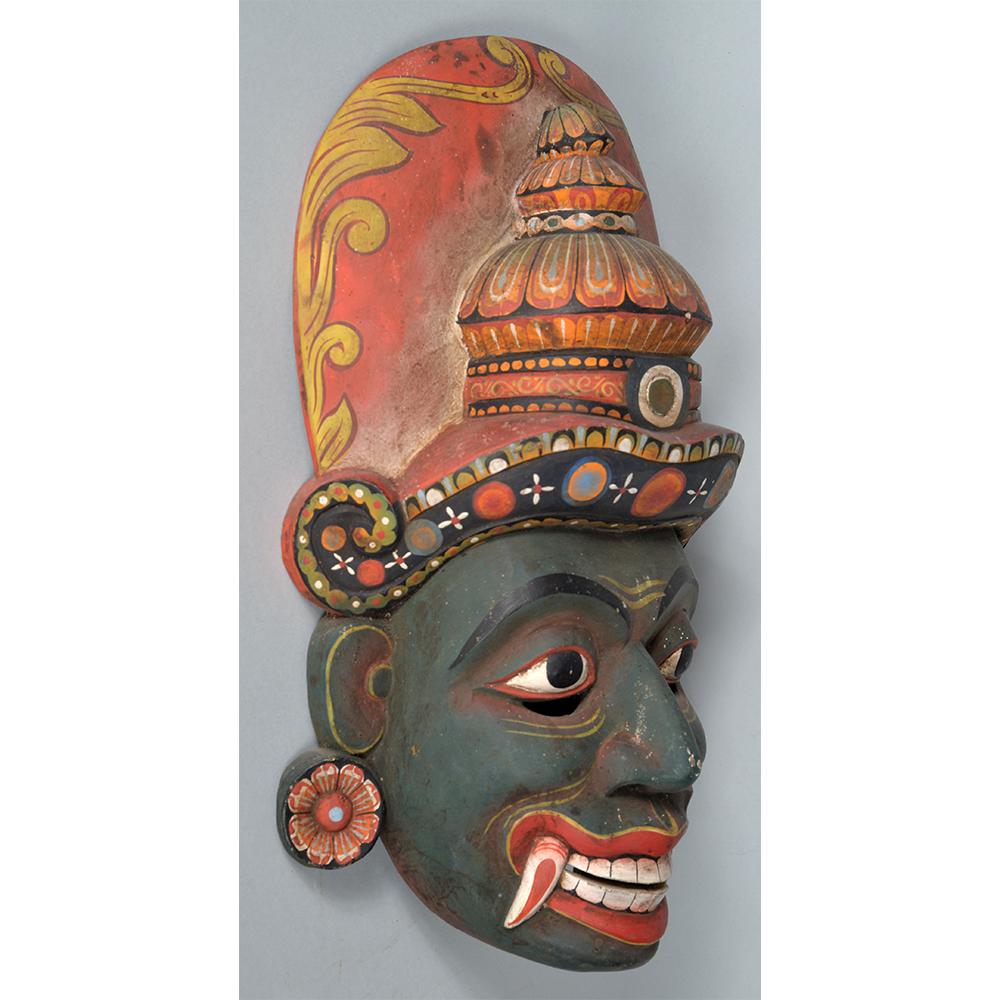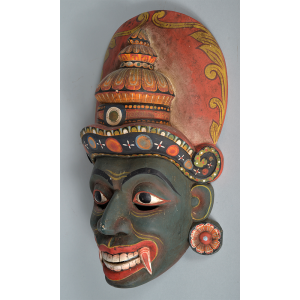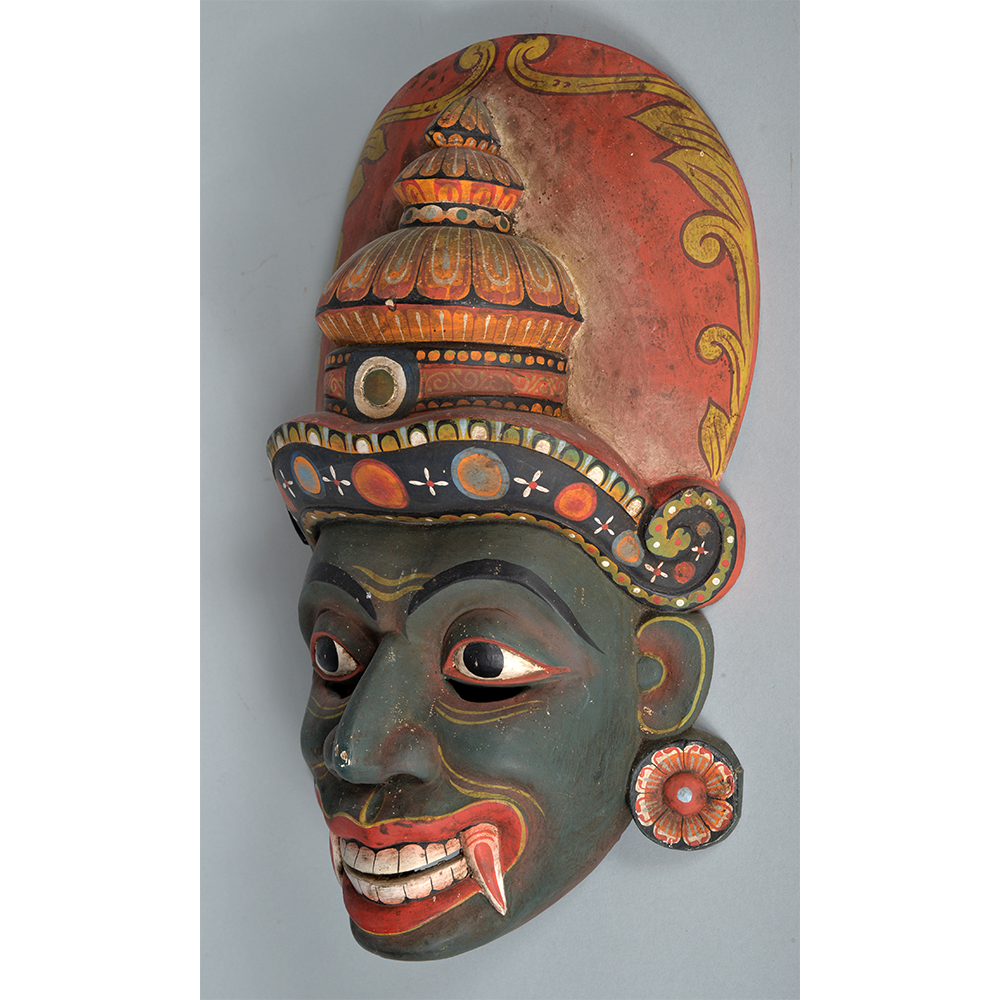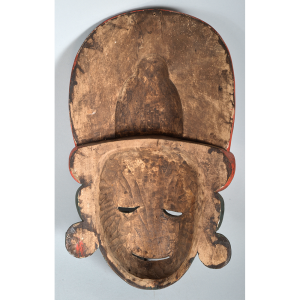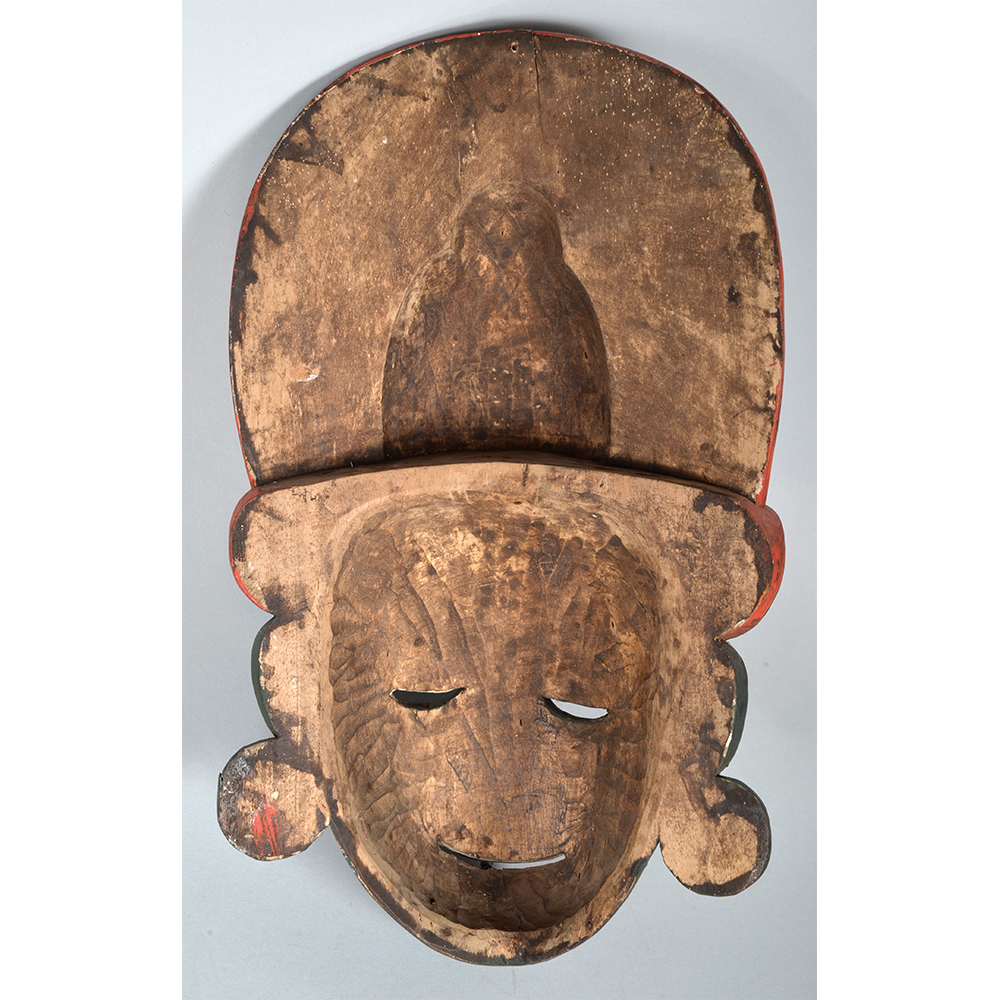TITLE: Kali Mask
TYPE: face mask
GENERAL REGION: Asia
COUNTRY: Sri Lanka
ETHNICITY: Sinhalese
DESCRIPTION: : Kali Amma Mask
CATALOG ID: ASLK002
MAKER: Unknown
CEREMONY: Kolam Natima
AGE: mid-twentieth century
MAIN MATERIAL: kadura (Strychnox nux vomica) wood
OTHER MATERIALS: paint
The masked dance of Sri Lanka developed from shamanic healing and purification rituals, and split along two lines. The first, Yakun Natima, is the healing dance performed by a shaman. Each demon (yakku) represents a specific disease or ailment, and to invoke the demon, the shaman wears a mask depicting the symptoms or symbols of the disease. When performing as a group, a character known as Kola Sanni Yakka, who is a kind of amalgamation of all diseases, presides over the demons.
The second line, Kolam Natima is a storytelling dance drama involving 40 masked characters of very diverse types. The story originates in a myth of a pregnant Sinhalese queen who develops a craving to see masked dances. She begs her husband, the king, to arrange it, but he knows of no such dances. At his request, the god Sekkria, one of the four guardian gods, carves the masks and teaches the people how to perform the dance. They perform for the royal audience, and the baby is consequently born strong and healthy. The stories told with the masks are not a single cohesive narrative, but a series of stories that merge Sinhalese folk traditions with Buddhist Jataka stories, which tell of the former lives of the Buddha.
A Kolam Natima performance begins with ritual addresses to gods and the Buddha. What follows is a prologue showing brief stock, mostly comical, scenes from traditional Sri Lankan society. Finally, the king and the queen in very large masks enter with their retinue, whence they watch the dance. The performance ends with the dance, typically involving Gara demons, Nagas (snake demons) and the Garuda (a Naga-eating god-bird) who were eventually reconciled by the Buddha. The performance is intended to purify the village and to spread prosperity.
This mask represents Kali Amma, a god who leapt from Durga’s brow in order to kill certain demons, but became so battle raged that she began killing everything in her path until Shiva stopped her by throwing himself under her feet. Kali is considered another side of Durga, but destructive and evil, and so she appears black and ferocious, with fangs.
For more on the masks of Sri Lanka, see Alain Loviconi, Masks and Exorcisms of Sri Lanka (Paris: Éditions Errance, 1981).
